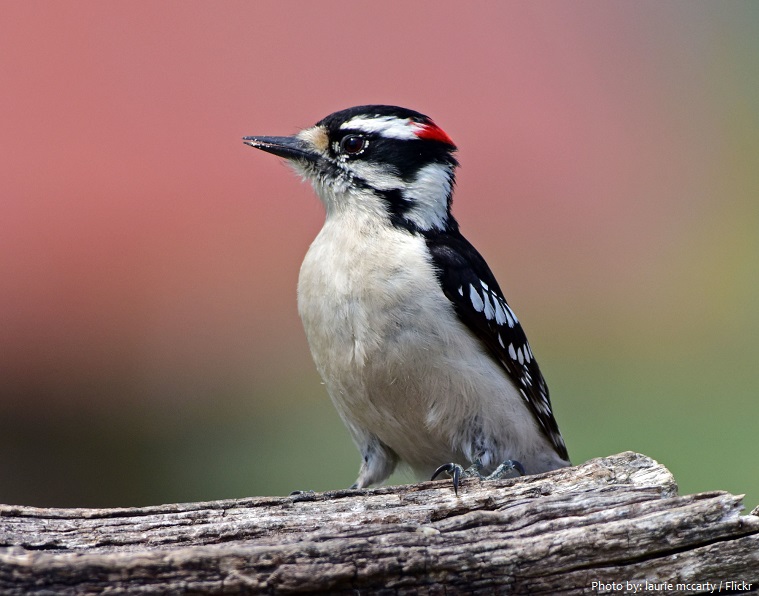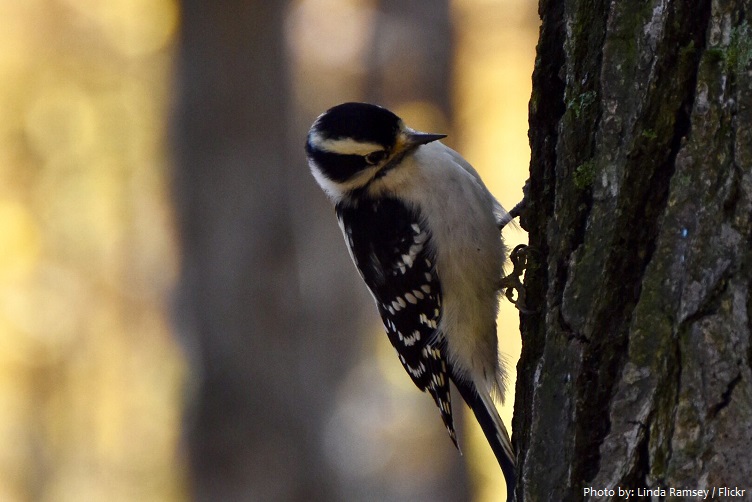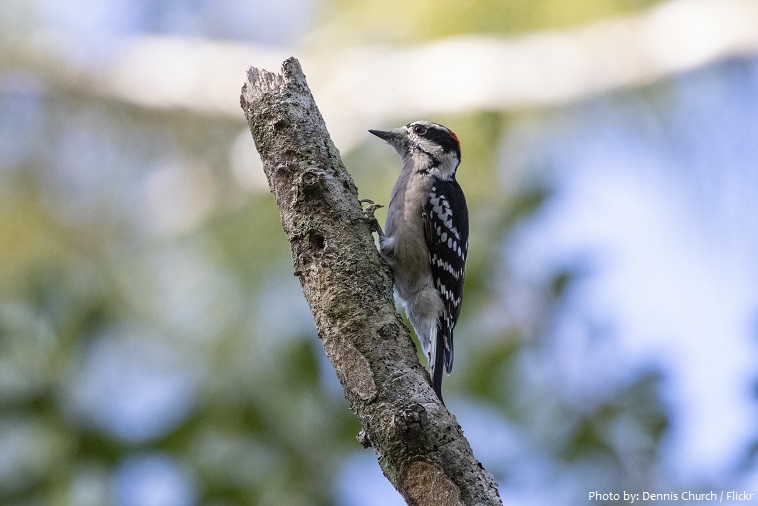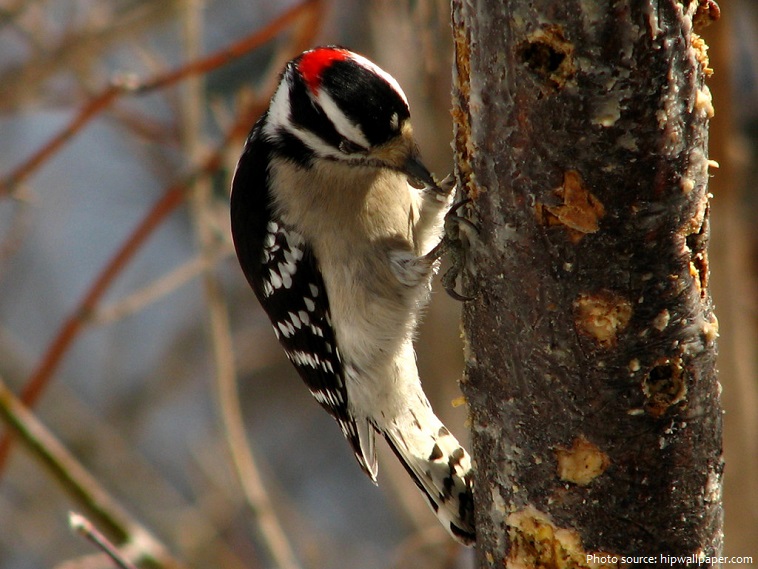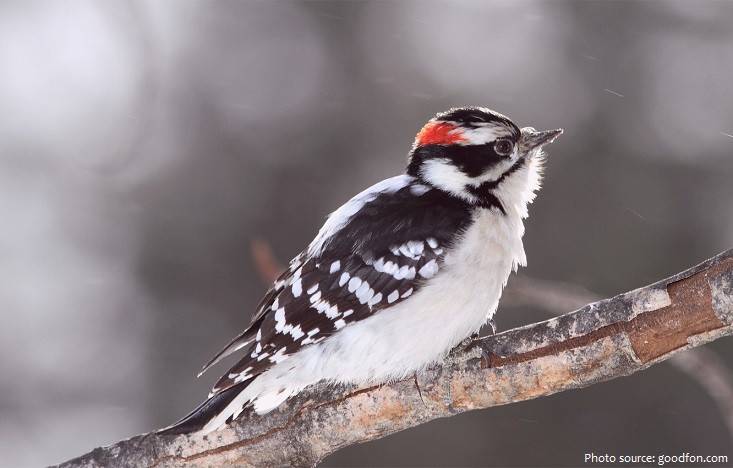The downy woodpecker is a species of woodpecker.
This species is found most of the United States and Canada, except for the deserts of the southwest and the tundra of the north.
Woodpeckers live where trees grow. The downy woodpecker is at home in a variety of wooded areas across its range, in the northern mixed forests and in the deciduous forests farther south, in woodlots and parklands, in orchards, and even in city parks and neighbourhoods.
One wild downy woodpecker lived to be 11 years and 11 months old. Most downy woodpeckers probably do not live this long.
Adult downy woodpeckers are the smallest of North America’s woodpeckers but there are many smaller species elsewhere, especially the piculets.
The total length of the species ranges from 14 to 18 cm (5.5 to 7.1 in) and the wingspan from 25 to 31 cm (9.8 to 12.2 in). Body mass ranges from 20 to 33 g (0.71 to 1.16 oz).
The downy woodpecker is mainly black on the upperparts and wings, with a white back, throat and belly and white spotting on the wings. There is a white bar above the eye and one below. They have a black tail with white outer feathers barred with black. Adult males have a red patch on the back of the head whereas juvenile birds display a red cap.
Like other woodpeckers this species peck into trees in search of food or to create a nesting site. They also “drum,” or peck in a rapid rhythmic succession to establish their territory and attract mates. Drumming usually occurs in the spring on metal or wood resonant surfaces. It may occur a number of times during a single day, and last for days or months.
Woodpecker is able to peck 20 times per second. It produces between 10,000 and 12,000 pecks per day.
As the smallest North American woodpecker, the downy can drill cavities in trees or limbs that measure as little as 10 cm (4 in) around.
Downy woodpeckers are diurnal, roosting at night inside holes.
Their diet is consist mainly of insects (especially beetles, caterpillars and ants) and also seeds and berries. Their diet also include the European corn borer, a moth that costs the US agriculture industry more than $1 billion annually in crop losses and population control.
The downy woodpecker gives a number of vocalizations, including a short pik call. One may identify the woodpecker by pik-call, counting half a second between piks (a total of four must be heard).
The majority of downy woodpeckers throughout the geographic range are year-round residents.
Downy woodpeckers are are monogamous. Both male and female prepare nest in the tree. Female lays between 3 and 8 eggs. Incubation period lasts about 12 days. Both parents feed the chicks. It takes about 20 days before the young are ready to leave the nest.
Overall, downy woodpecker populations are stable in North America, and in Canada, the numbers of the birds has even increased in the last 20 to 30 years.
These woodpeckers are popular guests, even taking up residence in birdhouses.
The downy woodpecker is virtually identical in plumage pattern to the larger hairy woodpecker, but it can be distinguished from the hairy by the presence of black spots on its white tail feathers and the length of its bill. The downy woodpecker’s bill is shorter than its head, whereas the hairy woodpecker’s bill is approximately equal to head length.
